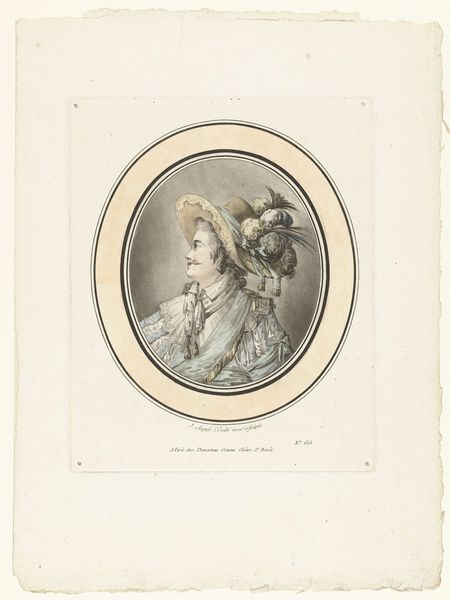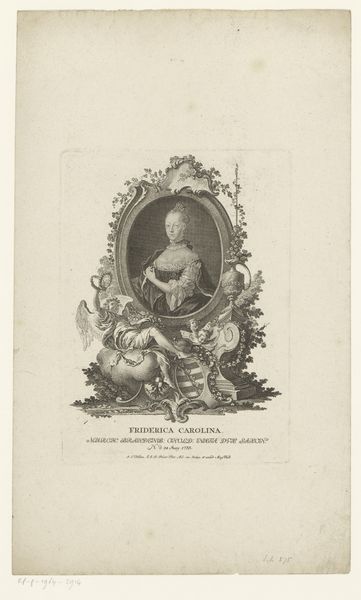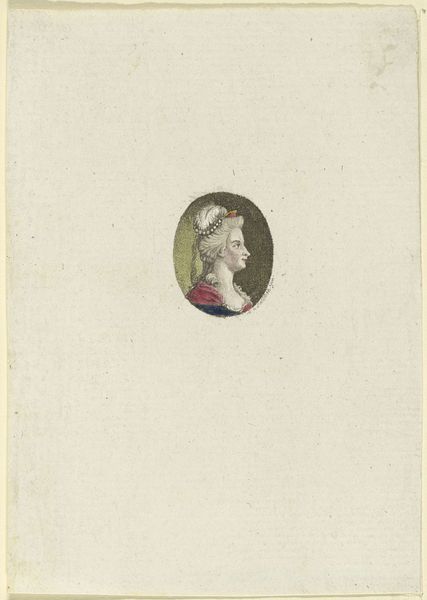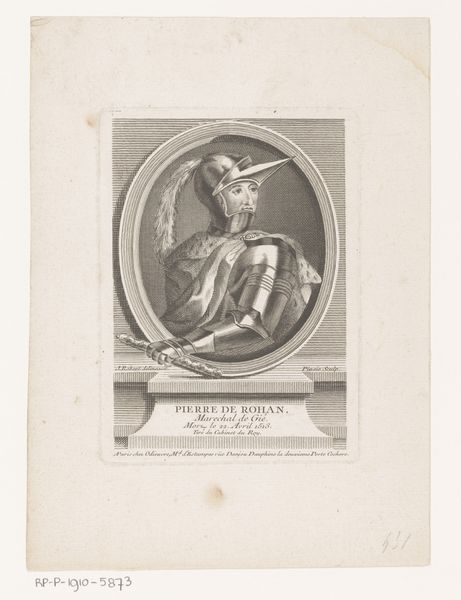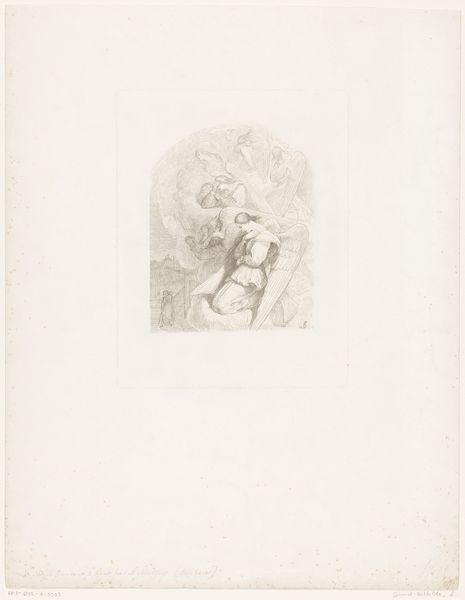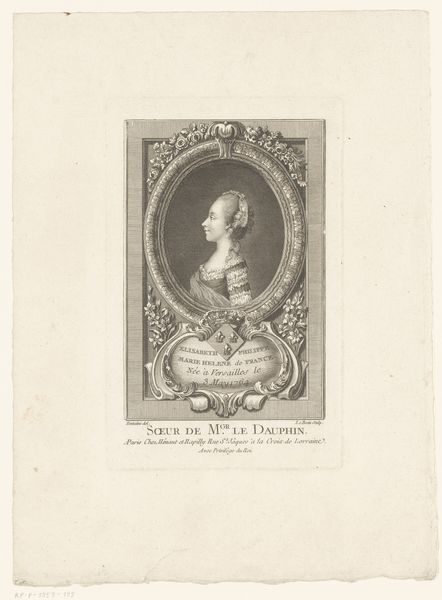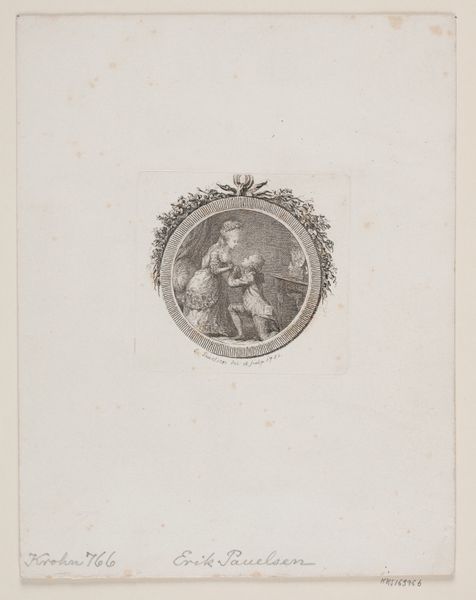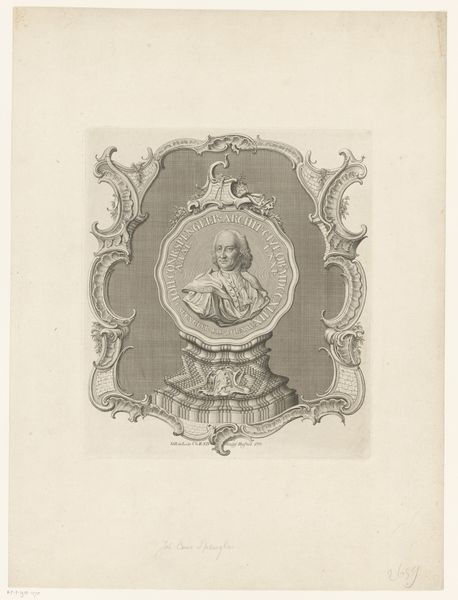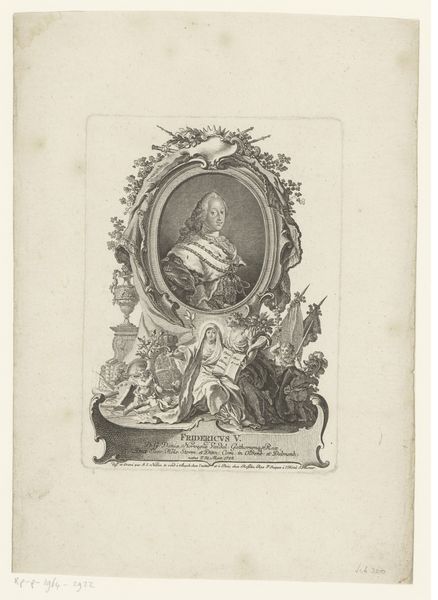
Dimensions: height 224 mm, width 178 mm
Copyright: Rijks Museum: Open Domain
Jean-Augustin Léveillé created this delicate stipple engraving and etching, titled "Buste van een dame met hoed," on paper. Such images offer us a window into the fashion and social mores of late 18th-century France. The elaborate hat, powdered hair, and refined dress speak to the subject's elevated social standing. During this era, fashion became a potent signifier of class and adherence to aristocratic ideals. However, these markers of status were also increasingly scrutinized. As social and political tensions rose, the opulence of the French aristocracy became a target for criticism. Images like this, intended as records of status, could also serve as reminders of inequality. To fully understand this artwork, it's helpful to delve into the period's fashion history, political pamphlets, and social commentaries. These sources shed light on the complex interplay between art, identity, and social change. By examining these historical contexts, we gain a deeper appreciation for the public role of art and the politics of imagery.
Comments
No comments
Be the first to comment and join the conversation on the ultimate creative platform.
